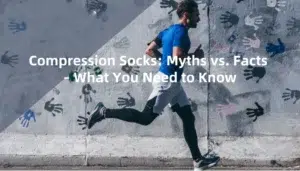Compression socks are a significant tool for enhanced blood circulation and improved venous return from lower limbs to the heart. In addition, they are an essential asset for managing certain medical conditions like compression tights for varicose veins, deep venous thrombosis, and pulmonary embolism. They can make a huge difference in health conditions. However, to enjoy all the benefits of any compression gear, it is necessary to utilize it properly with proper fittings and properties. This is where an important query arises: How tight should compression socks be?
Don’t worry; as in this article, we will be highlighting all the necessary details regarding proper fittings and utilization of compression stockings and whether they are supposed to be tightly fitted or not. So, let’s dive into the debate!
Why Do Compression Socks Need To Be Tight?
Compression socks are specialized compression gear designed to exert adequate pressure on your lower limbs for improved blood circulation. They are tailored with special pressure graduation properties, providing the highest pressure at the ankle joint, gradually decreasing when moving up to the knees. This pressure graduation is made to force blood from the leg veins to the heart, which will ultimately improve blood flow, promote venous return, and reduce swelling.
Moreover, these anti-embolism stockings also help to manage certain medical conditions like severe varicose veins, deep vein thrombosis, pulmonary embolism, and pedal edema. The key element lies in their pressure graduation specularity.
Besides, athletes find compression stockings to be an essential asset, as they help eliminate muscle fatigue and decrease tissue oxygenation.
All of the previously mentioned benefits of compression socks will only be available if they fit properly or are suitably tight enough for the legs. Therefore, for these purposes, most compression socks need to be gently tight throughout their course to exert suitable pressure on the legs.
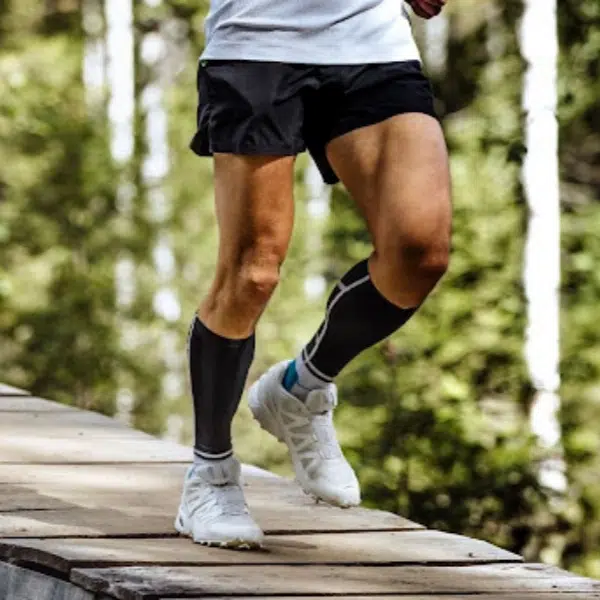
Source:https://gaintheedgeofficial.com/blogs/news/how-tight-should-compression-socks-be
How Tight Should Compression Socks Be?
Though compression socks need to be adequately tight according to their purpose of use, how tight should compression socks be? Well, the answer lies behind the purpose of wearing compression socks.
This is because the tightness of compression socks completely depends on the level of compression that they offer. Typically, the compression levels of the compression socks vary from mild to extra firm compression, as outlined below:
- Mild compression, ranging from 10 to 15 mmHg.
- Moderate compression, ranging from 15 to 20 mmHg.
- Firm compression, ranging from 20 to 30 mmHg.
- Extra firm compression, ranging from 30 to 40 mmHg.

However, these various compression levels serve distinct purposes in different health conditions.
As far as the tightness of compression stockings is concerned, then compression socks should be tight as per their usage, which is stated below:
Compression Socks for Athletes
Athletes are advised to choose compression socks with medium compression levels ranging from 15-20 mmHg of pressure. It is because a tighter compression than this might cause muscular fatigue, as prolonged hours of physical exertion require milder or, at max, moderate compression levels for best results.
Compression Socks for Varicose Veins
Medical conditions like varicose veins also require a compression level of around 15 to 20 mmHg of pressure, as firm or extra-firm compression might worsen the condition.
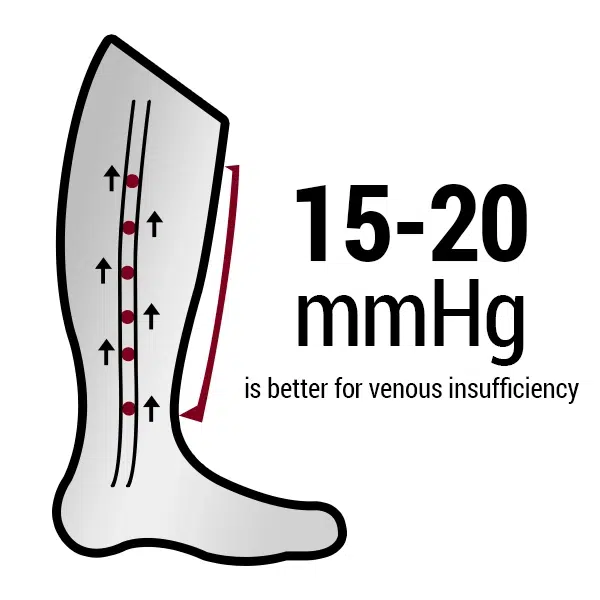
Compression Socks for Pregnancy-Related Leg Swelling
Pregnancy-related leg swelling is a common issue that most pregnant women experience. It also requires compression to reduce edema and swelling in pregnant women’s legs. The best range varies between 15 to 20 mmHg, providing moderate compression levels.
Compression Socks for Prolonged Travelling
Prolonged traveling via flights leads to immobilization of the lower limbs, which also causes frequent edema and swelling of the legs. In this case, light compression pressure, ranging from 10 to 15 mmHg, is the best compression level.
Compression Socks for Post-Surgical Recovery
Patients during their post-surgical recovery period again experience annoying immobilization due to recommended bed rest. This post-surgical bed rest can cause serious health issues, in which the development of blood clots leading to conditions like DVT or PE is quite life-threatening. It is best to recommend compression socks that offer firm to extra firm compression levels in such cases.
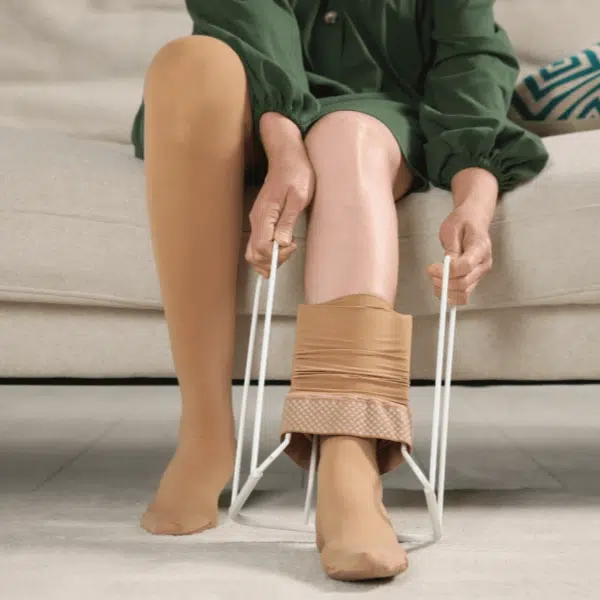
Source:https://veinsbegone.com/the-role-of-compression-therapy-in-post-surgery-recovery/
How Do You Know If Your Compression Socks Are Too Tight Or Too Lose?
The tightness and firmness of compression stockings are the key elements that make them extremely beneficial. This doesn’t mean your compression socks should be extremely tight or firm, as extra tight socks can significantly cause discomfort and pain.
On the contrary, since your compression stockings shouldn’t be too tight, this doesn’t mean your compression socks should be loose, as loose socks will offer you nothing.
Therefore, knowing the right level of compression for your legs is crucial.
Signs That Your Compression Socks Are Too Tight
The following signs can help you determine whether your compression stockings are too tight or not:
- Your tight socks will cause numbness and tingling.
- There will be pain and discomfort.
- They will cause deep red marks or indentation marks on your skin.
- Due to numbness, your feet might feel cold or pale.
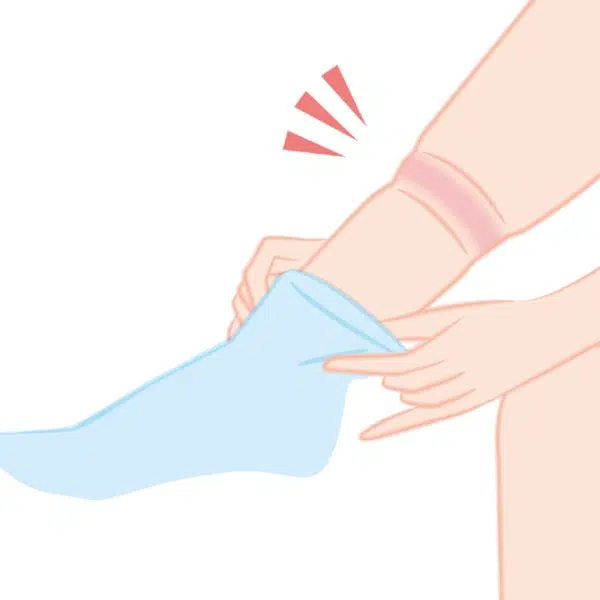
Source:https://www.footfiles.com/health/orthopaedics/article/sock-line-hyperpigmentation-symptoms-causes-prevention
Signs That Your Compression Socks Are Too Loose
The following signs can help you determine whether your compression socks are too loose or not:
- Your loose socks might slip down your legs.
- The compression socks might be sagging.
- They will feel snug.
- They will feel just like regular socks, offering no degrees of compression.
- There will be a lack of support for your legs.
Tips to Achieve the Right Fit
Understanding how compression socks work will help you appreciate the importance of choosing the right size and level of compression. Now, here are some practical tips to help you achieve the ideal fit:
- Most compression sock manufacturers provide sizing charts based on calf circumference, ankle circumference, and sometimes shoe size. Measure your legs accurately to ensure you select the appropriate size.
- As we’ve discussed, compression levels are often categorized as mild, moderate, firm, or extra firm. Make sure you select a level that is appropriate for your needs and feels comfortable yet effective.
- If possible, try on different brands and styles of compression socks. Each brand may fit slightly differently, so testing them will help you find the best fit.
- If you wear compression stockings for the first time, start with a lower compression level and gradually increase as your body adjusts, ensuring comfort and effectiveness.

Frequently Asked Questions (FAQs)
1. How do you know if compression socks are too tight?
If your compression stockings are too tight, they will cause extreme pain and discomfort, causing numbness and tingling sensations on your feet. In addition, if your socks are too tight, they will also cause indentation marks on your skin.
2. Can tight socks cause blood clots?
Yes! Tight socks, if worn for prolonged periods, can significantly restrict blood flow and increase the risks of developing blood clots.
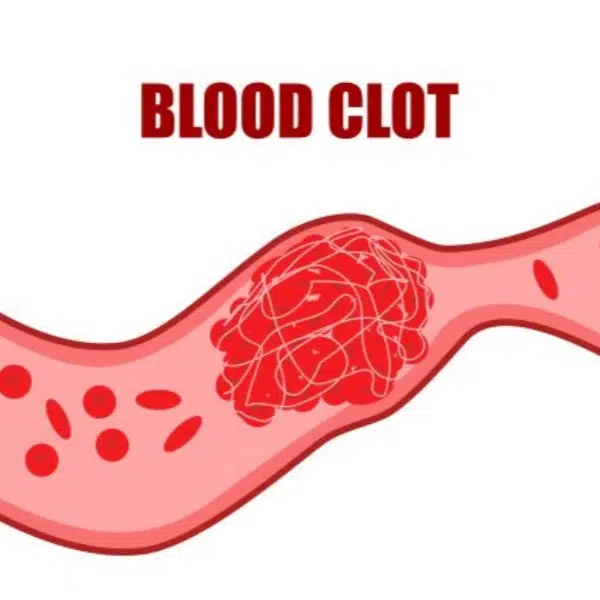
Source:https://bloodclot.org/blood-clot-medical-terminology/
3. Are compression socks just tight socks?
No! Compression stockings aren’t just tight socks. Instead, they are specialized graduated compression stockings tailored to apply gentle pressure throughout the legs, improving blood flow and venous return to the heart.
4. Which is tighter, 15-20 mmHg or 20-30 mmHg?
20-30 mmHg level of compression is tighter than the 15-20 mmHg compression range.
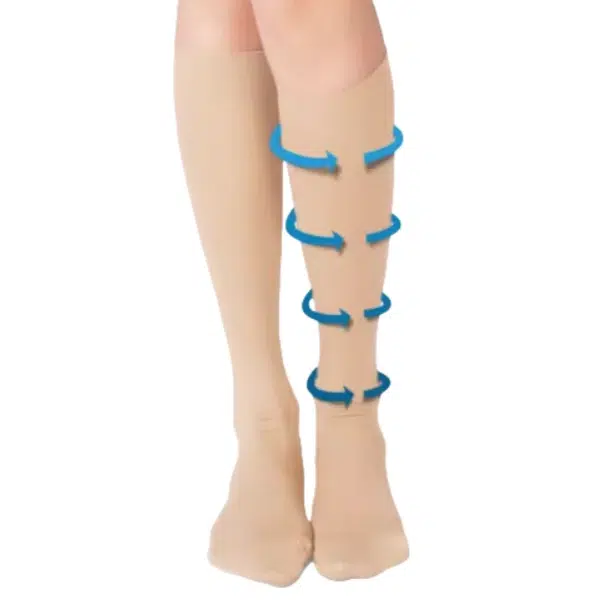
5. Are tight socks bad for you?
Yes! Tight socks can be highly detrimental to your health if they restrict blood circulation. This is because restrictive blood flow can significantly increase the risks of developing blood clots.
6. Are my compression stockings tight enough?
Your medical-grade compression socks are tight enough if they feel like providing adequate pressure but are neither painful nor cause any form of discomfort. Instead, they feel like providing support and balance to your legs.
Moreover, they should not cause numbness, tingling, paleness, or deep red marks on your skin.
By observing these signs, you will know whether your compression socks are tight enough.

The Final Verdict
Compression stockings are specialized pressure-generating socks tailored in such a way that they provide graduated pressure throughout your legs. This pressure is highest at the ankle joint, keeping your ankle joint firm and supportive, while the pressure reduces as the socks ascend towards the knees.
However, the primary function of compression socks is to improve blood circulation, prevent blood pooling and stasis, and enhance venous return to the heart. And these functions will only be performed optimally when your compression socks fit perfectly on your legs.
A perfect fit and an appropriate compression level are crucial factors that ensure your compression socks function effectively.
It doesn’t mean your compression stockings should be extra tight or firm. Instead, every situation requires different compression levels ranging from mild to extra firm compressions.
For instance, athletes require milder degrees of compression, ranging from 8 to 15 mmHg. On the other hand, a patient in his post-surgical recovery period requires a firm to extra firm degree of compression ranging from 20 to 40 mmHg.
However, it is always best to consult your healthcare provider for the best results and perfect compression levels for your conditions.
